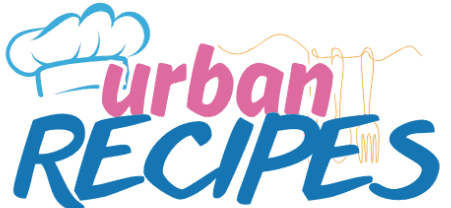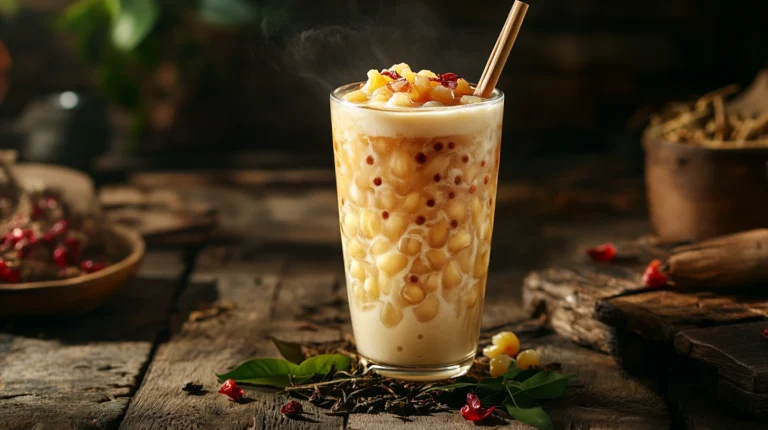Introduction and Basics
I. Introduction
Let’s be real: bubble tea has taken the world by storm, and now you can make boba pearls at home to enjoy whenever you like. It’s not just a drink; it’s an experience. Those chewy, sweet tapioca pearls combined with creamy tea or fruity flavors—it’s a match made in food heaven. Plus, making boba at home is easier than you’d think, and it’s a fun way to customize your favorite bubble tea flavors.
The good news? You can totally make boba pearls at home It’s easier than you’d think, and honestly, it’s kind of fun to whip up your own version. Plus, when you make it yourself, you can experiment with flavors and sweetness levels. Ready to get started? Let’s dive into the basics of boba and why it’s worth trying this DIY adventure.
Table of contents
II. What is Boba?
So, what exactly is boba? It’s short for “bubble tea,” a drink that usually includes tea, milk, sweetener, and those famous chewy tapioca pearls (also called boba). There are two main types:
- Tapioca Pearls: The OG boba. These are made from tapioca starch, cooked until chewy, and soaked in sweet syrup.
- Popping Boba: Little bursts of flavor! These are fruit-filled pearls that pop in your mouth. They’re usually made with a seaweed extract outer shell.
For more on the origins and science of boba, check out this detailed Wikipedia article on bubble tea.
Traditional Ingredients
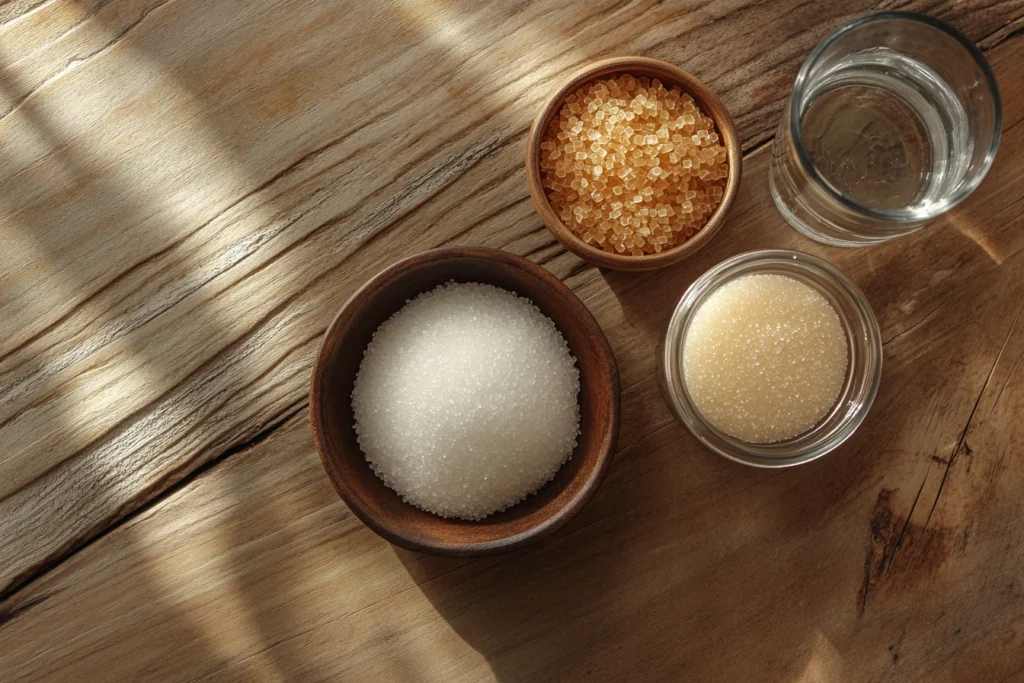
Boba tea often starts with brewed black or green tea as the base. Milk is added for creaminess—this could be whole milk, condensed milk, or even plant-based options like oat or almond milk. Tapioca pearls are the star, but you’ll also find fun toppings like jelly, pudding, or cheese foam in some variations.
Nutritional Info
Wondering if it’s healthy? Tapioca pearls are mostly carbs with some added sugar, so they’re a treat. You can make it lighter by controlling the sweetness or using alternative milks.
III. Why Make Boba Pearls at Home?
Alright, let’s talk about why you’d want to DIY your boba instead of just heading to your favorite shop.
- Cost-Effectiveness: A single cup of bubble tea can set you back $5 or more. Making it at home costs just a fraction of that.
- Customization: When you make it yourself, you can control everything—tea strength, sweetness, type of milk, and even the size of the pearls.
- Quality Control: Want organic tea? Gluten-free tapioca? You’ve got full control over your ingredients, so you can make it exactly how you like it.
For a breakdown of bubble tea’s components, visit the Homemade Swedish Fish Recipe page for inspiration on infusing flavors into your creations.
IV. Essential Equipment for Homemade Boba
You don’t need a ton of fancy tools to make bubble tea, but having a few key items on hand makes the process smoother:
- Basic Kitchen Tools: A pot for boiling pearls, a strainer, and measuring cups.
- Boba-Specific Gear: A wide straw (to sip those pearls), and if you’re feeling fancy, a tapioca pearl mold for uniform sizes.
- Tea Accessories: A tea strainer or infuser for loose-leaf tea and a shaker or blender for mixing.
In the next section, I’ll walk you through how to make your own tapioca pearls from scratch, cook them to perfection, and build your favorite bubble tea drinks. Get ready to impress your taste buds!
Making Boba Pearls at Home
V. Homemade Tapioca Pearls
Making tapioca pearls from scratch might sound intimidating, but trust me, it’s totally doable. Plus, there’s something super satisfying about creating those chewy little pearls yourself! Here’s how:
Ingredients Needed:
- 1 cup tapioca starch
- ½ cup water
- 2 tablespoons brown sugar
Step-by-Step Instructions:
- Prepare the Dough: Heat the water and brown sugar in a small pot over medium heat. Stir until the sugar dissolves. Bring the mixture to a boil, then lower the heat. Add half of the tapioca starch, stirring quickly until it forms a sticky dough.
- Knead the Dough: Transfer the dough to a clean surface and gradually knead in the remaining starch until it’s smooth and pliable. If it’s too sticky, add a little more starch.
- Shape the Pearls: Roll the dough into thin ropes, about ¼ inch thick, then cut them into small pieces. Roll each piece into a ball between your palms to create pearls.
- Dust with Starch: Lightly coat the pearls with tapioca starch to prevent sticking.
Tips for Perfect Texture:
- Work quickly to prevent the dough from drying out.
- Keep the pearls small, so they cook evenly.
- If you don’t want to make them all at once, freeze the uncooked pearls for later.
VI. Cooking Tapioca Pearls
Once you’ve shaped your pearls, it’s time to cook them. Here’s the secret: patience is key!
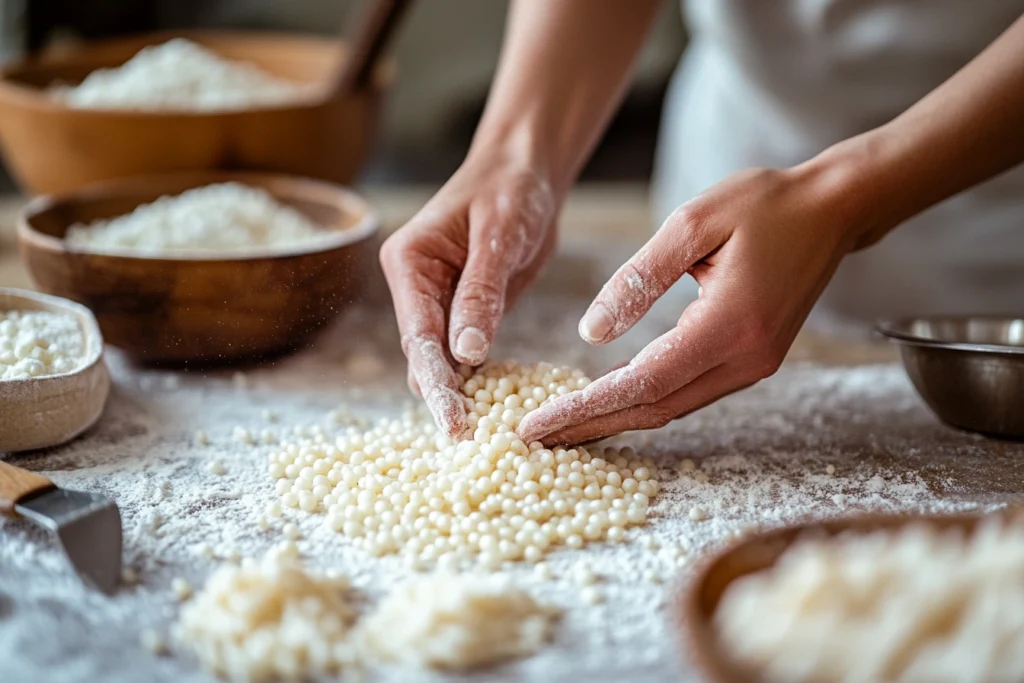
Boiling Method:
- Boil Water: Bring a large pot of water to a rolling boil. You’ll need at least 4 cups of water for every 1 cup of pearls.
- Cook the Pearls: Add the pearls and stir gently to prevent sticking. Let them boil for 15-20 minutes, stirring occasionally.
- Soak for Chewiness: Turn off the heat and let the pearls sit in the hot water for another 15 minutes.
- Rinse and Sweeten: Drain the pearls and rinse them with cold water to stop the cooking. Toss them in a little sugar or honey to keep them sweet and prevent clumping.
Storage Tips:
- Cooked pearls are best used within 4 hours. After that, they can harden or lose their texture.
- For longer storage, keep them in a sealed container submerged in a sugary syrup.
VII. Preparing the Bubble Tea Base
Now that you’ve mastered the pearls, let’s talk about the heart of bubble tea: the tea itself.
Choosing the Right Tea:
You can use almost any tea as a base, but the classics are:
- Black Tea: Strong and rich, perfect for traditional milk tea.
- Green Tea: Light and refreshing, pairs well with fruit flavors.
- Oolong Tea: A balanced choice with a hint of smokiness.
Brewing Techniques:
- Loose-Leaf Tea: Use about 1 tablespoon of loose tea per 8 ounces of water. Brew at the recommended temperature (usually 200°F for black tea and 175°F for green tea).
- Tea Bags: If you’re in a rush, tea bags work just fine—just use 1 bag per cup of water.
Adding Milk or Cream:
Here’s where you can get creative! Choose your favorite option:
- Whole Milk: For a creamy, classic taste.
- Condensed Milk: Adds sweetness and richness.
- Plant-Based Options: Almond, oat, or coconut milk are great alternatives.
Sweeteners and Syrups:
- Simple syrup (equal parts sugar and water) is a staple for bubble tea.
- You can also use honey, agave, or flavored syrups like vanilla or caramel.
Putting It All Together:
- Combine your brewed tea with milk and sweetener in a shaker or blender. Shake it well to create a frothy texture.
- Add your cooked tapioca pearls to a glass.
- Pour the tea mixture over the pearls, and voila—you’ve got bubble tea!
Now that you’ve got the basics down, it’s time to have fun with different flavors and toppings. From fruity blends to creative toppings, the next section will help you take your homemade bubble tea to the next level!
Flavors and Variations
VIII. Classic Bubble Tea Flavors
There’s a reason the classic bubble tea flavors are still so popular—they’re timeless! These are the ones you’ll find in almost every boba shop. Get inspiration from this Quesillo Recipe.
Black Milk Tea
This is the OG bubble tea flavor. Made with robust black tea, sweetened milk, and chewy tapioca pearls, it’s comforting and delicious. To make it:
- Brew strong black tea (Assam or Earl Grey works great).
- Add sweetened condensed milk or regular milk with sugar.
- Shake with ice and pour over cooked pearls.
Taro Milk Tea
Taro has a subtly sweet and nutty flavor, plus its iconic purple color. You can use taro powder or fresh taro paste to make it creamy and delicious.
Matcha Bubble Tea
Matcha lovers, this one’s for you! Whisk premium matcha powder with milk and sweetener for a refreshing and earthy drink.
IX. Fruit-Based Bubble Tea Recipes
If you’re a fan of fruity and refreshing drinks, these fruit-based bubble tea recipes are for you. They’re lighter and perfect for hot summer days.
Mango Green Tea
This tropical delight combines green tea with the sweetness of ripe mango. To make it:
- Brew green tea and let it cool.
- Blend fresh mango (or mango puree) with sweetener and ice.
- Combine with the tea and pour over pearls.
Strawberry Milk Tea
Strawberries and milk? Yes, please! Here’s how to make it:
- Blend fresh strawberries with milk and sweetener.
- Strain the mixture for a smooth texture.
- Pour over cooked pearls for a drink that tastes like dessert.
Passion Fruit Bubble Tea
Passion fruit adds a tangy twist that balances perfectly with the sweetness of the pearls. To make it:
- Brew green tea and stir in passion fruit puree or juice.
- Add simple syrup to taste.
- Serve over pearls and ice.
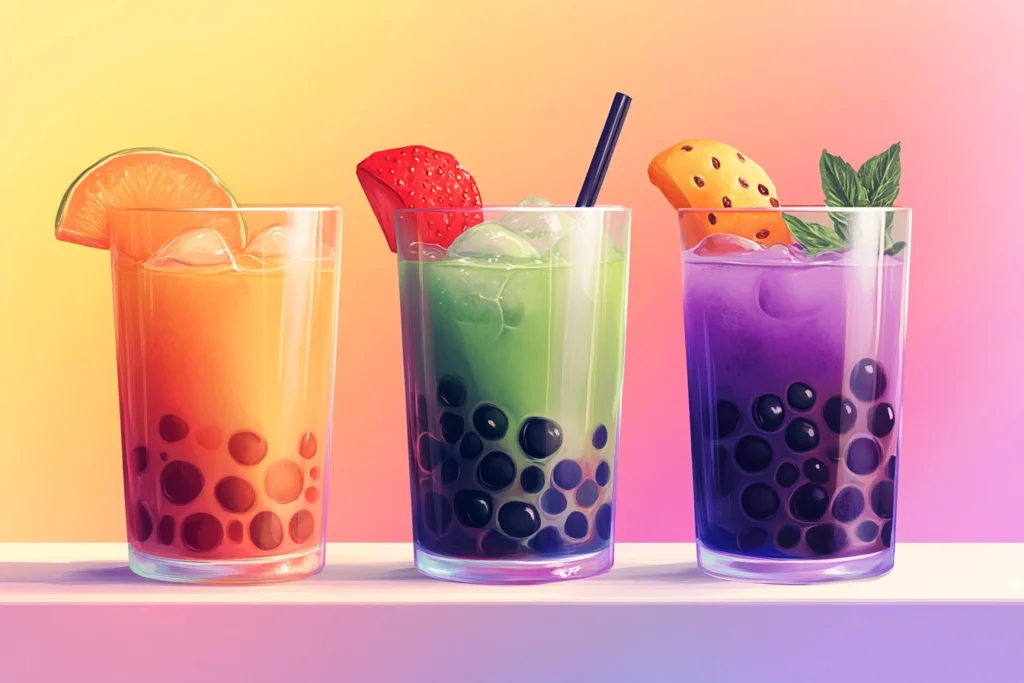
X. Creative Boba Variations
Once you’ve mastered the basics, it’s time to get creative. These fun twists will impress your friends and keep your boba game exciting.
Brown Sugar Boba
This trendy variation features tapioca pearls coated in a rich, caramel-like brown sugar syrup. To make it:
- Cook tapioca pearls as usual, then simmer them in a mix of brown sugar and water until they’re glazed.
- Add the pearls to a glass and pour in your favorite milk tea.
Cheese Foam Topping
If you’ve never tried cheese foam, you’re missing out. It’s a slightly sweet, creamy topping made with cream cheese. To make it:
- Whisk cream cheese, sugar, heavy cream, and a pinch of salt until smooth and fluffy.
- Spoon it on top of any bubble tea for a delicious, savory-sweet twist.
Seasonal Flavors
Switch things up with flavors that celebrate the season:
- Pumpkin Spice Milk Tea in fall.
- Peppermint Mocha Bubble Tea during the holidays.
- Watermelon Green Tea in summer.
Now that you’ve explored the exciting world of bubble tea flavors, the next section will share tips for perfecting your homemade boba, troubleshooting common issues, and wrapping it all up with an encouraging conclusion!
Tips and Troubleshooting to Make Boba Pearls at Home
XI. Tips for Perfect Homemade Boba
Making boba at home can feel like an art form, but these tips will help you nail it every time:
Sweetness and Flavor Balance
- Use simple syrup for consistent sweetness that dissolves easily in your tea.
- Start with less sugar and adjust to taste—it’s easier to add than take away!
- Pair bold teas like black tea with richer flavors (brown sugar or taro), and lighter teas like green tea with fruity flavors.
Texture Tricks
- For soft, chewy pearls, always cook in plenty of water and don’t skip the resting step after boiling.
- To keep pearls fresh, coat them in sugar syrup or honey immediately after rinsing.
Presentation Tips
- Use clear glasses for that Instagram-worthy look. The layers of tea, milk, and pearls are part of the charm!
- Add ice for a refreshing chill and to keep the drink visually stunning.
Experiment with Milk Options
- Try oat milk for a creamy but dairy-free alternative.
- Coconut milk adds a tropical twist that pairs beautifully with fruit flavors.
XII. Troubleshooting Common Issues
Problem: Tapioca Pearls Are Too Hard
Solution: This usually happens if they’re undercooked. Boil them longer or let them soak in hot water for extra softness.
Problem: Pearls Are Too Soft or Mushy
Solution: Overcooking can make pearls mushy. Reduce the boiling or soaking time next round.
Problem: Pearls Clump Together
Solution: Rinse the cooked pearls in cold water and toss them with sugar syrup to prevent sticking.
Problem: Tea Is Too Weak
Solution: Use more tea leaves or tea bags, and brew for the recommended time to ensure a strong base flavor.
Problem: Drink Tastes Bland
Solution: Double-check your sweetener. Adjust the sugar or add flavored syrups like vanilla or caramel for extra oomph.
For additional tricks on maintaining texture and flavor, visit Sweet Breakfast Recipes.
XIII. Conclusion
And there you have it—your complete guide to making bubble tea at home! From crafting chewy tapioca pearls to experimenting with flavors like classic milk tea, mango green tea, or even seasonal pumpkin spice, the possibilities are endless.
Making boba at home isn’t just about saving money—it’s about creating something fun and delicious that you can enjoy with family and friends. So, grab your tapioca starch, brew some tea, and get creative. You’ll impress your taste buds and maybe even spark a new hobby. Happy sipping!
FAQs
1. What ingredients do you need to make boba pearls at home?
To make boba pearls, you’ll need:
- Tapioca starch (a must for that chewy texture)
- Water
- Brown sugar or white sugar (for flavor and syrup)
Optional ingredients include food coloring for a fun twist or other sweeteners for customization.
2. How difficult is it to make boba from scratch?
Making boba from scratch is simpler than you might think! It’s mostly about mixing, shaping, and cooking. While it does take a bit of patience, the steps are straightforward. With some practice, you’ll have it down in no time.
3. Can you use store-bought tapioca flour for boba?
Absolutely! Store-bought tapioca flour (or tapioca starch) is the main ingredient for homemade boba pearls. Just make sure it’s labeled as tapioca starch, not something like cornstarch or potato starch.
4. What is the best way to cook boba pearls at home?
The best method is to boil them in plenty of water:
- Use a 4:1 water-to-pearl ratio.
- Cook for 15–20 minutes, then let them sit in hot water for another 15 minutes for optimal chewiness.
- Rinse in cold water and coat with sugar syrup for flavor.
5. How do you store homemade boba pearls?
Cooked boba pearls are best consumed fresh. If needed, store them submerged in syrup or water at room temperature for up to 8 hours. Avoid refrigerating them, as this makes them hard and unappetizing.
6. Is it cheaper to make boba at home than to buy it?
Definitely! Homemade boba costs much less than buying bubble tea at a shop. A single serving of DIY boba is just a fraction of the price of a store-bought drink, especially if you already have tea and sugar at home.
7. How long does it take to make boba pearls from scratch?
From start to finish, making boba pearls takes about 1–1.5 hours. This includes kneading the dough, shaping the pearls, and cooking them. The result is totally worth the effort!
